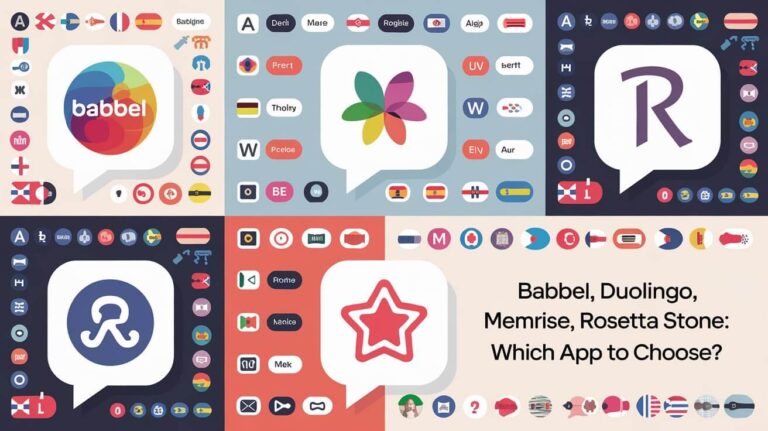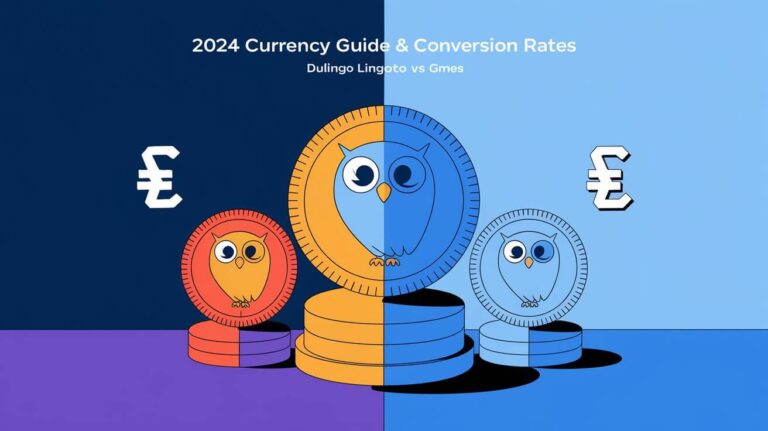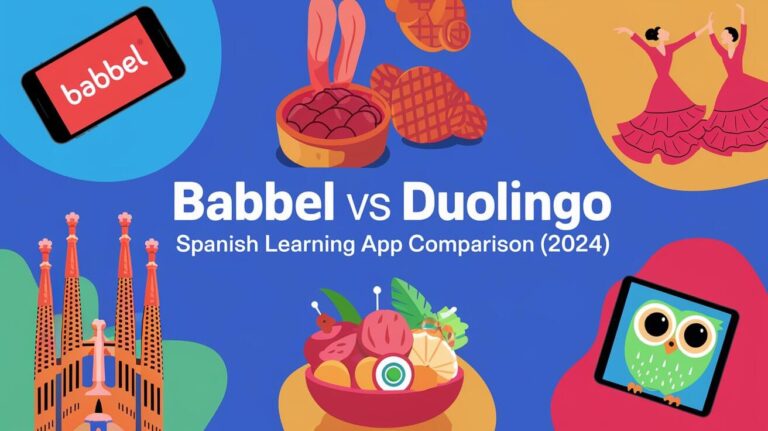Language learners have lots of apps to pick from these days. Babbel, Duolingo, and Busuu are three big names you might hear about. Each one does things a bit differently to help you learn. This guide looks at what makes each app special, what they’re good at, and who they might work best for. We’ll check out how the lessons work, what they cost, which languages you can learn, and what other users think. By the end, you should have a better idea of which app fits your needs.
Choosing the Best Language Learning App
In today’s digital age, language learning apps have revolutionized how we approach foreign languages. Babbel, Duolingo, and Busuu have emerged as leaders in this space, each with its own unique selling points.
Why These Three Apps Stand Out
Babbel, Duolingo, and Busuu have gained popularity for good reasons. They offer engaging content, user-friendly interfaces, and proven methods for language acquisition. But how do they stack up against each other?
The Importance of Selecting the Right Language Tool
Picking the right app can make or break your language learning experience. It’s crucial to find a tool that matches your learning style, goals, and budget. Let’s break down what each app brings to the table.
Babbel: In-Depth Language Instruction
Babbel takes a more traditional approach to language learning, focusing on practical conversations and real-life scenarios.
Babbel’s Lesson Structure and Format
Babbel’s lessons are typically 10-15 minutes long, perfect for busy schedules. They use a mix of exercises including:
- Fill-in-the-blanks
- Matching pairs
- Speech recognition
- Writing exercises
This variety keeps learners engaged and reinforces new concepts from multiple angles.
Languages Offered by Babbel
Babbel currently offers 14 languages, including:
- Spanish
- French
- German
- Italian
- Portuguese
- Russian
- Swedish
While not as extensive as some competitors, Babbel focuses on quality over quantity in its language offerings.
Babbel’s Pricing Options
Babbel uses a subscription-based model with several options:
- 1 month: $17.95
- 3 months: $15.25/month
- 6 months: $8.45/month
- 12 months: $6.95/month
They also offer a 20-day money-back guarantee, allowing users to try the app risk-free.
Pros and Cons of Babbel
Pros:
- Focused on practical, conversational language
- Strong grammar explanations
- Speech recognition technology
- Offline mode available
Cons:
- More expensive than some competitors
- Fewer languages offered
- No free version available
Duolingo: Gamified Language Learning
Duolingo has made a name for itself with its gamified approach to language learning, making the process fun and addictive.
Duolingo’s Unique Approach to Language Acquisition
Duolingo turns language learning into a game, complete with:
- Experience points
- Leaderboards
- Streaks
- Virtual currency
This gamification keeps users motivated and coming back day after day.
Languages Available on Duolingo
Duolingo offers an impressive 40+ languages, including:
- Spanish
- French
- German
- Japanese
- Korean
- Arabic
- Hindi
They even offer fictional languages like Klingon and High Valyrian for the enthusiasts!
Duolingo’s Free vs. Paid Plans
Duolingo’s basic version is free, supported by ads. Their premium version, Duolingo Plus, offers:
- Ad-free experience
- Offline access
- Progress quizzes
- Unlimited hearts (attempts)
Duolingo Plus costs $6.99/month when billed annually.
Advantages and Disadvantages of Duolingo
Pros:
- Free basic version
- Gamified learning keeps users engaged
- Wide variety of languages
- Short, bite-sized lessons
Cons:
- Less focus on grammar explanations
- Can feel repetitive over time
- Some users find the sentences less practical for real-world use
Busuu: Social Language Learning
Busuu sets itself apart with its community-driven approach, allowing users to interact with native speakers.
Busuu’s Community-Driven Learning Model
Busuu encourages users to practice with native speakers through:
- Writing exercises corrected by the community
- Speaking exercises with feedback from natives
- Language exchange partnerships
This social aspect adds a real-world dimension to language learning.
Language Options on Busuu
Busuu offers 14 languages, including:
- English
- Spanish
- French
- German
- Italian
- Portuguese
- Chinese
While fewer than Duolingo, Busuu focuses on the most popular languages for learners.
Busuu’s Subscription Plans
Busuu offers a free plan with limited features and two premium options:
- Premium: $6.95/month (billed annually)
- Premium Plus: $13.99/month (billed annually)
Premium Plus includes all Premium features plus access to all 14 languages.
Strengths and Weaknesses of Busuu
Pros:
- Community feedback from native speakers
- Structured courses aligned with CEFR levels
- Offline mode available
- Certificates available upon course completion
Cons:
- Limited free version
- Fewer languages than some competitors
- Community feedback can be inconsistent
Key Features Comparison
Let’s break down how these apps compare in crucial areas of language learning.
Lesson Structure and Content
- Babbel: Focused on practical conversations, 10-15 minute lessons
- Duolingo: Short, game-like lessons, 5-10 minutes each
- Busuu: Structured lessons based on CEFR levels, 10-15 minutes long
Grammar Instruction
- Babbel: Strong focus on grammar with clear explanations
- Duolingo: Limited grammar instruction, learn through exposure
- Busuu: Moderate grammar focus with explanations and exercises
Vocabulary Building
- Babbel: Contextual vocabulary in realistic scenarios
- Duolingo: Varied vocabulary, sometimes less practical
- Busuu: Practical vocabulary tied to CEFR levels
Speaking and Pronunciation Practice
- Babbel: Speech recognition technology for pronunciation
- Duolingo: Basic speech recognition, limited speaking practice
- Busuu: Speaking exercises with native speaker feedback
Writing Skills Development
- Babbel: Writing exercises integrated into lessons
- Duolingo: Limited writing practice
- Busuu: Writing exercises with community feedback
User Experience and Interface
The app’s design can greatly impact your learning experience.
App Design and Ease of Use
- Babbel: Clean, professional design
- Duolingo: Colorful, cartoon-style interface
- Busuu: Modern, sleek design
Motivation and Engagement Techniques
- Babbel: Progress tracking, review reminders
- Duolingo: Streaks, leaderboards, virtual currency
- Busuu: Community interaction, progress tracking
Progress Tracking and Goal Setting
All three apps offer progress tracking, but Duolingo’s gamified approach often feels more rewarding for short-term goals.
Effectiveness for Different Learning Styles
Different learners have different needs. Here’s how these apps cater to various learning styles.
Visual Learners
- Babbel: Uses images and text
- Duolingo: Colorful visuals and animations
- Busuu: Images and videos in lessons
Auditory Learners
- Babbel: Audio pronunciation and listening exercises
- Duolingo: Audio for all phrases and sentences
- Busuu: Audio content and conversation practice
Kinesthetic Learners
- Babbel: Interactive exercises and typing
- Duolingo: Drag-and-drop exercises
- Busuu: Writing exercises and community interaction
Suitability for Various Proficiency Levels
Let’s see how these apps work for learners at different stages.
Beginners
All three apps are suitable for beginners, with Duolingo perhaps being the most approachable for absolute novices.
Intermediate Learners
Babbel and Busuu offer more comprehensive content for intermediate learners, while Duolingo may start to feel limited.
Advanced Language Students
For advanced learners:
- Babbel offers some higher-level content
- Duolingo becomes less useful
- Busuu’s native speaker interactions can be beneficial
Additional Resources and Features
Beyond basic lessons, these apps offer extra tools to enhance learning.
Offline Access
- Babbel: Available with subscription
- Duolingo: Available with Plus subscription
- Busuu: Available with Premium subscription
Supplementary Materials
- Babbel: Podcasts, games, cultural tips
- Duolingo: Stories (for some languages), podcasts
- Busuu: Vocabulary review, travel course
Certification Options
- Babbel: No official certification
- Duolingo: Offers Duolingo English Test
- Busuu: Offers certificates aligned with CEFR levels
Price Comparison and Value for Money
When it comes to cost:
- Babbel is the most expensive but offers comprehensive lessons
- Duolingo provides the most content for free
- Busuu sits in the middle, offering a mix of free and premium features
Consider your budget and learning goals when choosing.
User Reviews and Testimonials
Real user experiences can provide valuable insights.
What Real Users Say About Babbel
Users praise Babbel for its practical approach and clear grammar explanations. Some find it pricey but worth the investment.
Duolingo User Experiences
Many users love Duolingo’s fun, gamified approach. However, some advanced learners find it lacking in depth.
Busuu Community Feedback
Busuu users appreciate the community aspect and structured lessons. Some report inconsistent feedback quality from the community.
Which App is Right for You?
Choosing between Babbel, Duolingo, and Busuu depends on your specific needs and preferences.
Factors to Consider When Choosing
- Your learning style
- Your budget
- Your target language
- Your current proficiency level
- Your learning goals
Matching Your Learning Goals to the Right App
- For practical conversation skills: Babbel
- For a fun, game-like experience: Duolingo
- For community interaction and feedback: Busuu
Conclusion: The Verdict on Babbel vs Duolingo vs Busuu
Each of these apps has its strengths:
- Babbel excels in practical language instruction and grammar explanations
- Duolingo offers a fun, free way to start learning a language
- Busuu provides a good balance of structured learning and community interaction
The best choice depends on your individual needs and learning style. Consider trying each app’s free version or trial period to see which one resonates with you. Remember, the most effective app is the one you’ll use consistently!







